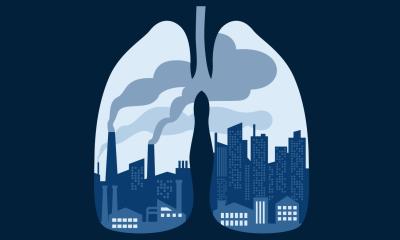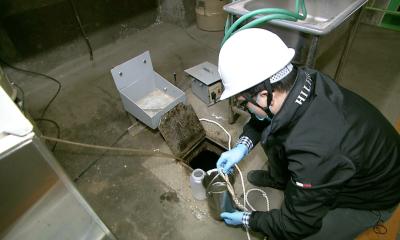Image source: Unsplash/Eutah Mizushima
News • Environmental connections
Has climate change driven the emergence of SARS-CoV-2?
Global greenhouse gas emissions over the last century have made southern China a hotspot for bat-borne coronaviruses, by driving growth of forest habitat favoured by bats.
A new study published in the journal Science of the Total Environment provides the first evidence of a mechanism by which climate change could have played a direct role in the emergence of SARS-CoV-2, the virus that caused the Covid-19 pandemic.
The study has revealed large-scale changes in the type of vegetation in the southern Chinese Yunnan province, and adjacent regions in Myanmar and Laos, over the last century. Climatic changes including increases in temperature, sunlight, and atmospheric carbon dioxide - which affect the growth of plants and trees - have changed natural habitats from tropical shrubland to tropical savannah and deciduous woodland. This created a suitable environment for many bat species that predominantly live in forests.
The number of coronaviruses in an area is closely linked to the number of different bat species present. The study found that an additional 40 bat species have moved into the southern Chinese Yunnan province in the past century, harbouring around 100 more types of bat-borne coronavirus. This ‘global hotspot’ is the region where genetic data suggests SARS-CoV-2 may have arisen. “Climate change over the last century has made the habitat in the southern Chinese Yunnan province suitable for more bat species,” said Dr Robert Beyer, a researcher in the University of Cambridge’s Department of Zoology and first author of the study, who has recently taken up a European research fellowship at the Potsdam Institute for Climate Impact Research, Germany. He added: “Understanding how the global distribution of bat species has shifted as a result of climate change may be an important step in reconstructing the origin of the Covid-19 outbreak.”
The fact that climate change can accelerate the transmission of wildlife pathogens to humans should be an urgent wake-up call to reduce global emissions
Camilo Mora
To get their results, the researchers created a map of the world’s vegetation as it was a century ago, using records of temperature, precipitation, and cloud cover. Then they used information on the vegetation requirements of the world’s bat species to work out the global distribution of each species in the early 1900s. Comparing this to current distributions allowed them to see how bat ‘species richness’, the number of different species, has changed across the globe over the last century due to climate change. “As climate change altered habitats, species left some areas and moved into others - taking their viruses with them. This not only altered the regions where viruses are present, but most likely allowed for new interactions between animals and viruses, causing more harmful viruses to be transmitted or evolve,” said Beyer.
The world’s bat population carries around 3,000 different types of coronavirus, with each bat species harbouring an average of 2.7 coronaviruses - most without showing symptoms. An increase in the number of bat species in a particular region, driven by climate change, may increase the likelihood that a coronavirus harmful to humans is present, transmitted, or evolves there.
Most coronaviruses carried by bats cannot jump into humans. But several coronaviruses known to infect humans are very likely to have originated in bats, including three that can cause human fatalities: Middle East Respiratory Syndrome (MERS) CoV, and Severe Acute Respiratory Syndrome (SARS) CoV-1 and CoV-2. The region identified by the study as a hotspot for a climate-driven increase in bat species richness is also home to pangolins, which are suggested to have acted as intermediate hosts to SARS-CoV-2. The virus is likely to have jumped from bats to these animals, which were then sold at a wildlife market in Wuhan - where the initial human outbreak occurred.
The researchers echo calls from previous studies that urge policy-makers to acknowledge the role of climate change in outbreaks of viral diseases, and to address climate change as part of Covid-19 economic recovery programmes. “The Covid-19 pandemic has caused tremendous social and economic damage. Governments must seize the opportunity to reduce health risks from infectious diseases by taking decisive action to mitigate climate change,” said Professor Andrea Manica in the University of Cambridge’s Department of Zoology, who was involved in the study. “The fact that climate change can accelerate the transmission of wildlife pathogens to humans should be an urgent wake-up call to reduce global emissions,” added Professor Camilo Mora at the University of Hawai‘i at Manoa, who initiated the project.
The researchers emphasised the need to limit the expansion of urban areas, farmland, and hunting grounds into natural habitat to reduce contact between humans and disease-carrying animals. The study showed that over the last century, climate change has also driven increases in the number of bat species in regions around Central Africa, and scattered patches in Central and South America.
Source: © University of Cambridge (CC-BY 4.0)
08.02.2021











